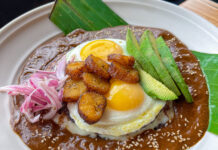
In Oklahoma, the triathlon season pulses with excitement as diverse groups host races statewide.
TriOKC, under Chris Horton’s leadership, organizes a bevy of events: a March duathlon, the Route 66 Triathlon with Riversport Adventures in downtown Oklahoma City which occurred on May 30, and other events sprinkled throughout the year.
Meanwhile, at Tulsa Area Triathletes, newbies and experts alike are guided by Tricia Cadenhead, who is a board member, sponsor and coach for the group. She also runs a series including a duathlon and the Tulsa Triathlon, often in June.
Even still, another group stages races in Guthrie, with this year’s Territorial Triathlon, the state championship, having happened in July.
For beginners, triathlons can seem intimidating, but a sprint, featuring a 500- to 750-yard swim, 10- to 15-mile bike, and 5K run, offers a less unnerving entry point and a tangible goal for which to strive.
Training, the experts say, looks different for everyone.
“Training depends on the race,” says TriOKC’s Horton. “For a sprint, a few hours a week – building to 500 yards swim, 3 to 5 miles run – works if you start where you’re at. But for a full Ironman’s 140.6 miles, it’s 10 to 12 hours weekly, and 20 hours if you’re competitive. It’s intense.”
Cadenhead echoes this training sentiment and works to help beginner athletes prepare as best as possible.
“We do a beginner tri-camp – that’s mostly my thing, my baby, though we all pitch in. It’s a 12-week course starting early February, meeting weekly until Spring Fever, our beginner-friendly triathlon.”
Newcomers can ease into training with two or three weekly swims, runs and bike rides, often on weekends, to build endurance.
“Ease into it,” Horton says. “Build strength and durability. Monitor your heart rate; if it spikes oddly, slow down.”
If it all seems like too much to handle, Cadenhead offers reassurance.
“The community is very supportive,” she says. “It may sound scary, but we welcome beginners with open arms, showing them routes and how to transition.”

Her camp includes swim, bike and run sessions, plus course rides, preparing racers for the “snake swim” under pool lane ropes. Post-camp, open-water sessions at Keystone on Tuesday nights with kayaks and paddleboards cater to first timers and seasoned athletes alike.
Preparing with the right gear is also crucial – wetsuits, helmets, shoes and running equipment must be used before an athlete’s first major event.
“Nothing new on race day – food, clothes, gear,” Horton warns, recalling blisters from new socks. Cadenhead camp teaches this, too, ensuring smooth switches from swim to bike to run.
Race day starts with a briefing, then a mass swim start. First-timers should hang back to avoid the risk of flailing arms, Horton says.
Before the big day, another concern is what to eat, and how much. Nutrition, the experts say, scales with distance. Sprints need less, but Olympic events like 1,500-yard swims, 25-mile bikes and 10K runs; Half Ironmans, which include 1.2-mile swims, 56-mile bikes and 13.1-mile runs; and Ironmans, which include 2.4-mile swims, 112-mile bikes and 26.2-mile runs, demand true fueling.
“Muscles burn sugar; replenish or suffer,” Horton says. “Train your gut, and test [energy] gels beforehand.”
Local races like TriOKC’s have no cut-off times, celebrating completion.























